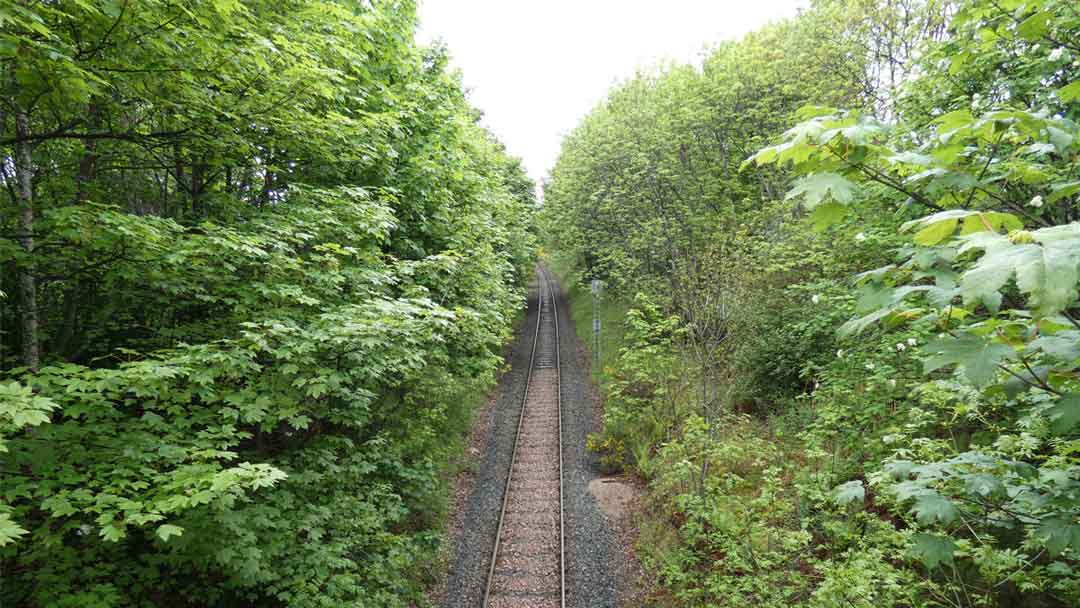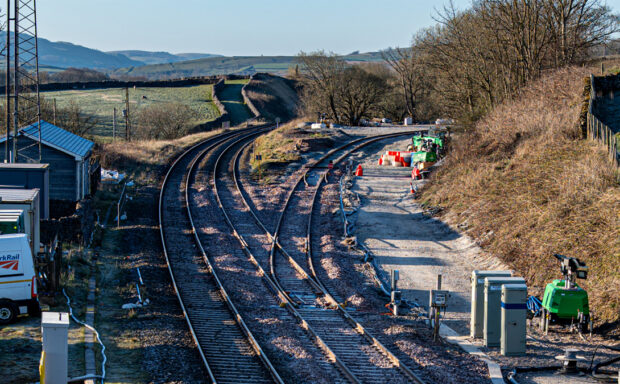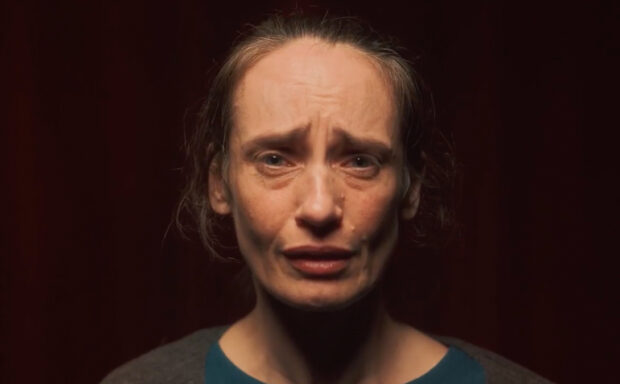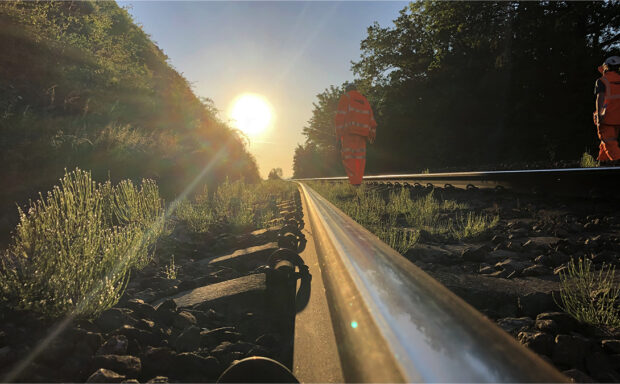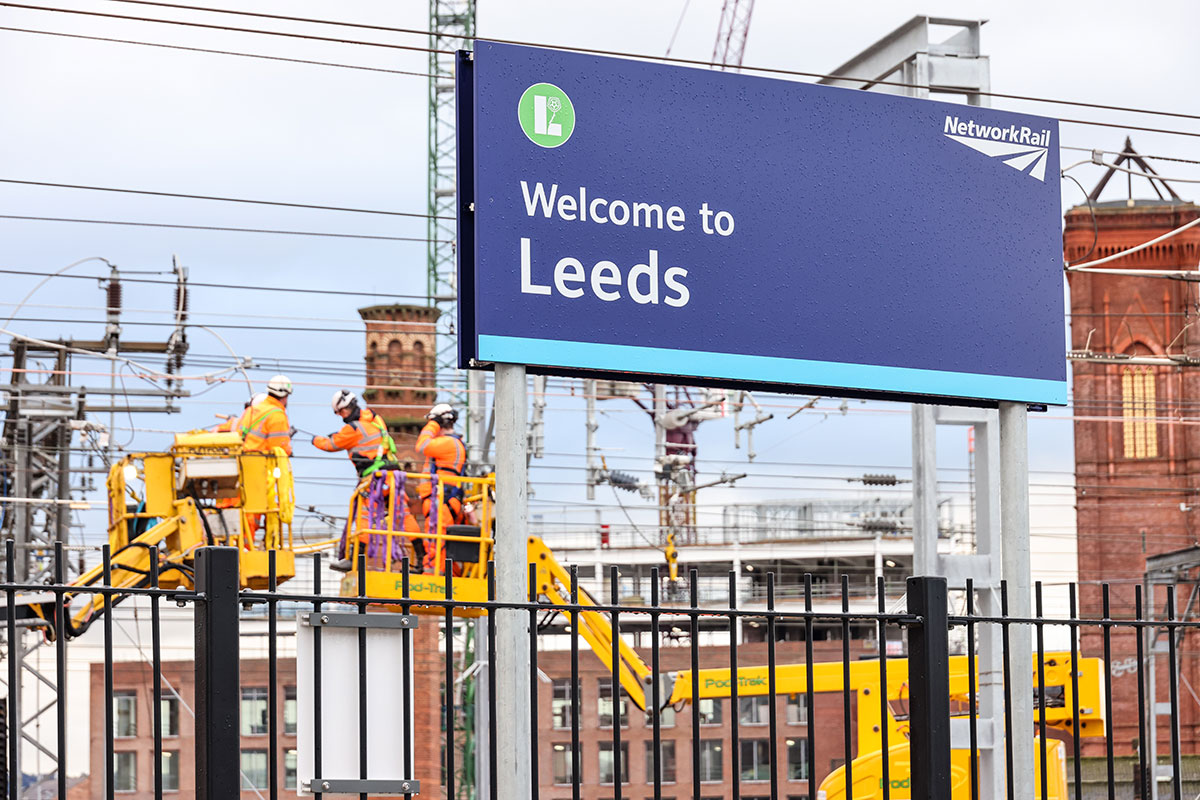We’re always looking to improve and innovate the way we manage the railway for you. Take a look at how we did this recently using artificial intelligence.
Overgrown vegetation next to the railway can be a challenge. Vegetation like trees and fallen leaves can be dangerous to trains and cause train delays.
It’s also expensive to deal with. We estimate incidents caused by vegetation cost us and the taxpayer about £3m a year in our Southern region alone.
Hubble
We’ve been trialling a system called Hubble since 2021 to help manage the problem in the Southern region. Hubble is innovative tech developed by CrossTech, a UK-based tech company. It uses artificial intelligence to detect overgrown vegetation next to the railway.
First, it captures footage using forward-facing cameras mounted or handheld on trains. The footage is then uploaded to an online platform that detects and highlights potential issues.
The results
Using Hubble has so far helped us manage the railway in this region in several safer and more efficient ways.
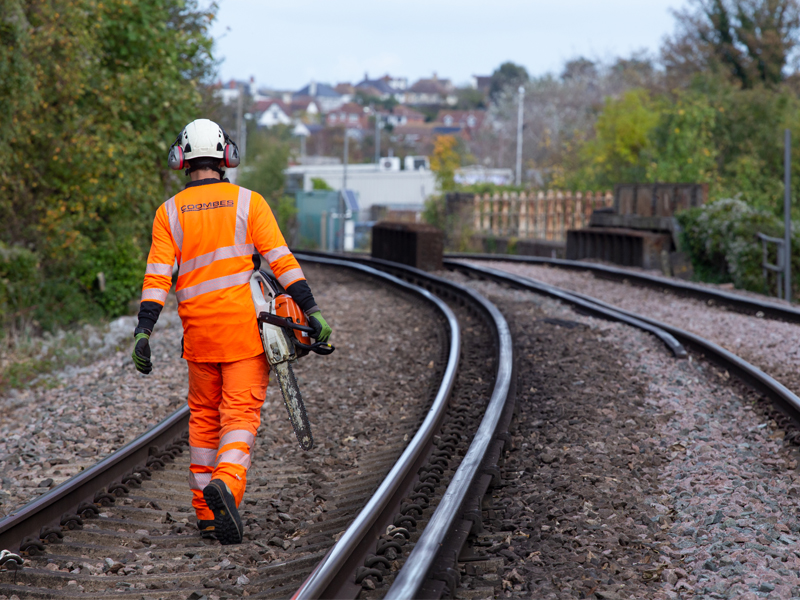
It has helped us reduce:
- the number of incidents involving trees blocking the line, or trees being struck by a train
- the number of times foliage has obscured signals – the traffic lights of the railway
- the number of vegetation entanglements with train pantographs (or the ‘antennae’ on the top of the train that gives power to the train from the overhead lines)
- the number of incidents of train damage caused by trees and bushes scraping trains.
Smoother journeys
Using Hubble has helped us reduce the number of train delays caused by overgrown vegetation. This has led to more reliable and smoother train services in the region.
Graph showing the results
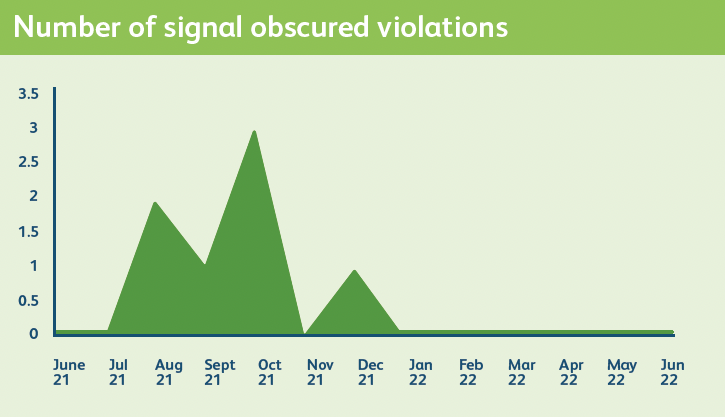
This graph shows the number of times overgrown vegetation obscured signals in the Southern region over a 12-month period when we used Hubble.
The results show a sharp decline in the number of times overgrown vegetation obscured signals as we continued to use Hubble. This is because we were able to improve the way we managed vegetation as time went on and we gathered more data from it.
Safer and more cost-effective
Hubble has also saved us money and helped keep our track workers safe. In fact, using Hubble across the Southern region has saved us about £150,000 a year. We have used Hubble to scope out potentially safe walking routes for our staff on the track.
Using Hubble in the future
We’re now using Hubble widely in Anglia, East Midlands and Southern and plan to roll it out more widely across Britain.
We hope to eventually use it to automatically detect vegetation along the track as well as beside it.
Overall, using Hubble has helped us deliver smoother and less disruptive journeys for you, keep our staff safe and manage the railway even more safely and efficiently. And we hope to continue using Hubble to do so.
